Boost your conversions with Custom Product Pages
App Store Optimization (ASO)
February 21, 2023
Custom Product Pages are becoming an ASO staple. Combining efficiency with lower costs, they are a great addition to any ASO (or UA) strategy. With targeting becoming more complicated after ATT and the looming loss of access to third-party cookies, CPP are the perfect solution. Personalize your users’ experience even before they hit download.
What are Custom Product Pages?
Custom Product Pages (CPP) is a new ASO feature from the App Store introduced in June 2021 for the annual WWDC. They became available a few months later. CPP allows developers to create alternative product pages that can be reached through a specific URL.
The Play Store has its own version of CPP called custom store listing and you can create up to 50 custom pages there.
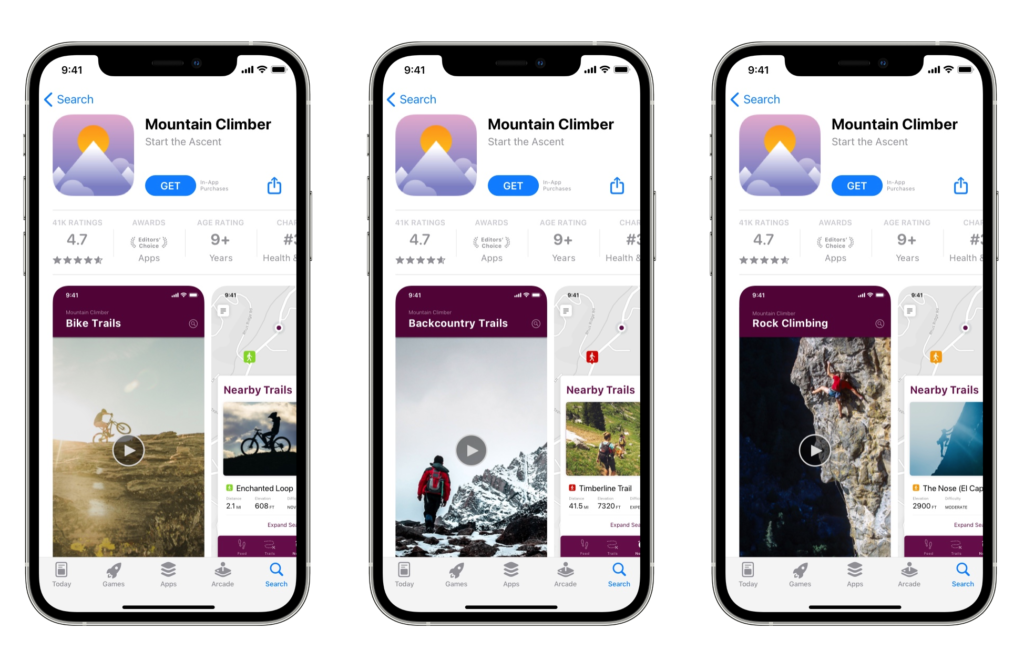
On the App Store, these custom pages can be used for Apple Search Ads campaigns as well, if you want to set up an ASA campaign using different visual assets than your default page you need to create a custom page.
Here’s what you can do with Apple’s custom pages:
- Create up to 35 different custom product pages
- Each page is only reachable through its unique URL
- Each page can be linked to an ASA campaign
- Each page is fully localizable
- You can customize app preview videos, screenshots, and promotional text but cannot modify the icon, title and subtitles
- Each page needs to go through App Review
What CPPs bring to the game
Custom pages allow you to create a strong link between paid and organic. Before them, potential users would click on a UA creative and land on a product page that was more generic and less targeted. With CPPs you can make your product page feel targeted, which improves its results.
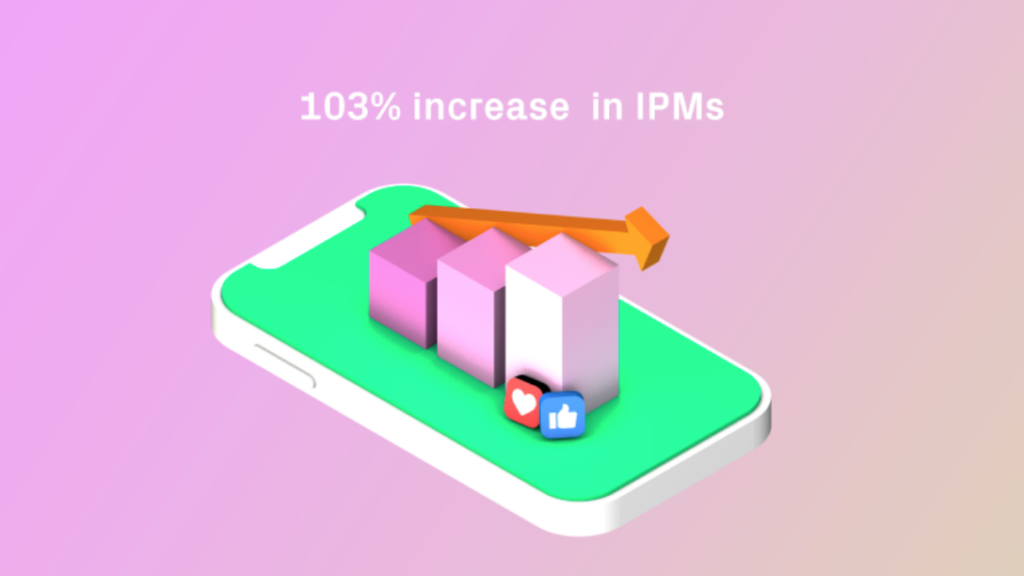
According to Phiture, Apple’s Custom Product Pages and Google’s Custom Store Listings bring a “drastically higher conversion rate from impressions to installs (IPMs) on Facebook Ads, up to 103%”.
That’s not all, MobileAction linked the use of CPPs to a 17% increase in conversion rates, a 126% increase in tap-through rates, and a 554% increase in installs. It’s no wonder that more people are turning to CPPs with such a level of efficiency.
In addition to strong results, they’re less costly than using your default page. Sure, there’s an added cost to producing a new set of creatives but custom product page campaigns spent 5.21% less per download and 8.91% per tap.
With less cost and better results, it feels like a no-brainer. Giving a shot to CPPs may bring great results and help fine-tune your funnel to ensure a great experience for users.
Why CPPs are so effective
CPPs create a seamless link between paid and organic. Thanks to custom pages, users land on a more familiar product page, one that’s directly linked to the ad they clicked on (whether it be UA or ASA). It also helps it feel more personal and targeted, especially for a content app that can really adjust its ASO visuals accordingly.
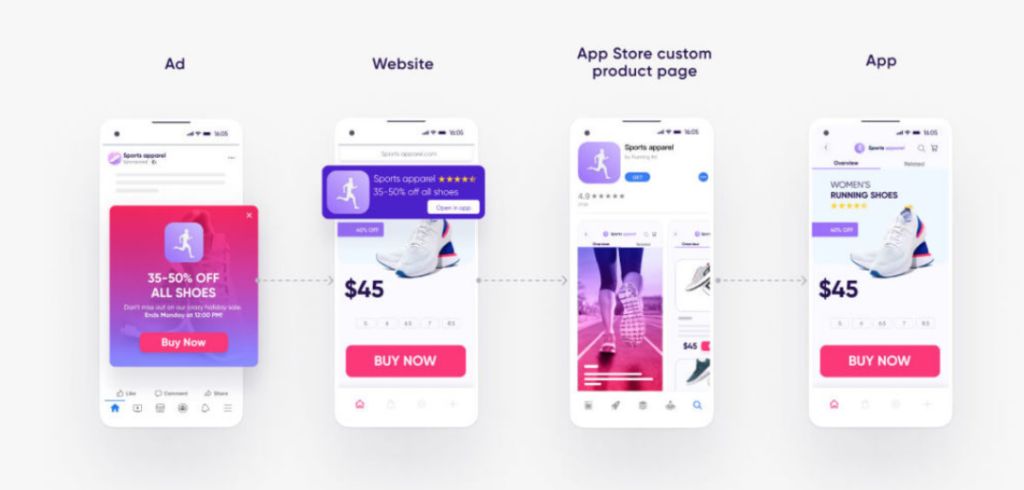
CPP adoption has become more and more important lately. According to Mobile Action, it grew by 5 in H2 2022 and some app or game categories are bigger CPP users than others. Games (and especially Casino games) seem to be really big on CPP use.
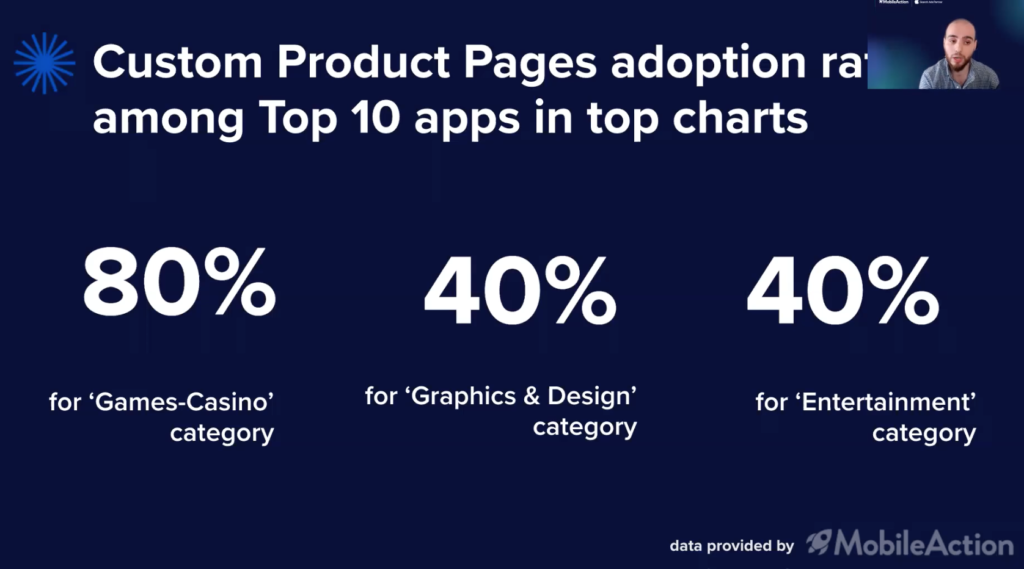
Custom pages are a great way to target specific audiences within your potential user base. For mobile games, for example, you can use CPPs to target different gamer personas, and showcase different aspects of your game to ensure that users will land on the most effective custom page for them.
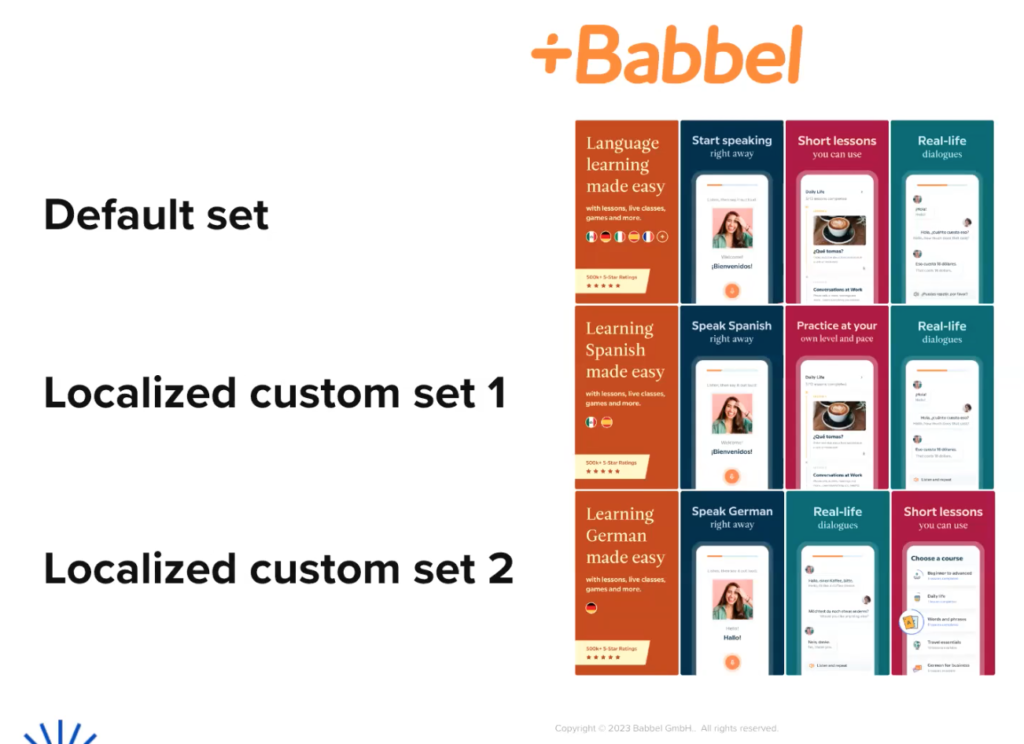
Because CPPs are the landing page of paid campaigns (after all they’re only reachable through a specific URL), you can adapt the custom creatives to the campaign, ensuring a seamless process that will boost and speed up conversions. Outside of more specific targeting, CPP can also be used for seasonality.
You can create ASA campaigns focused on seasonal keywords and try out your seasonal creatives thanks to custom pages. It allows you to keep your default page for most users and only target those who are looking for a seasonal app fix by positioning yourself on seasonal keywords with assets that match.
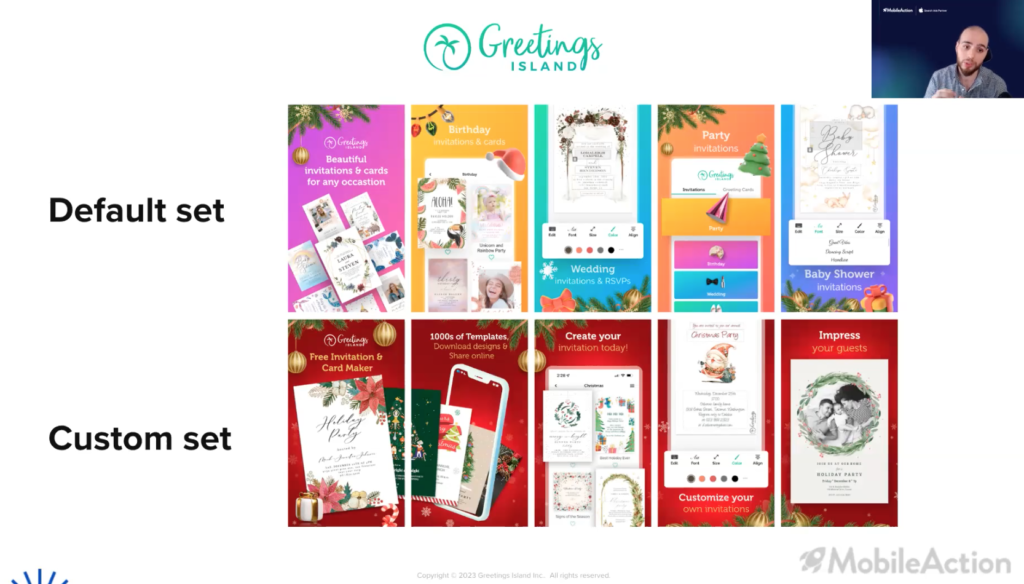
Outside of seasonal use, custom product pages are an excellent targeting tool. Users like personalization, in whichever forms it comes. You can choose a more specific topic or targeting for each custom page, you can take advantage of specific keywords to showcase relevant sides of your app or game.
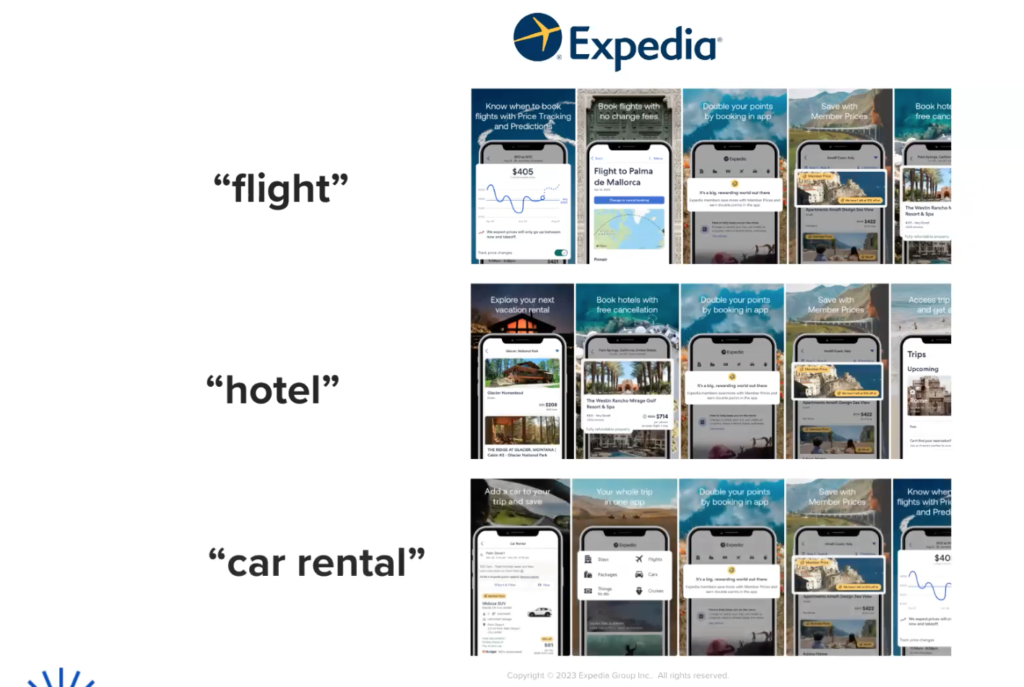
With CPPs’ inclusion in ASA, they’re now not only a great A/B testing tool, but they’re also a great way to offer a more personalized approach to your users, which is no doubt more effective (as we can see from the results obtained).
With more and more users opting out of targeted ads, CPPs (and ASA by association) are offering a good solution that relies on contextual clues (with specific keywords targeted instead of people) to offer an experience that doesn’t feel invasive to users.
Some tips on how to make the most out of your CPPs
- Reuse keywords from your ad campaign in your description
- Use a similar concept between the creative and the custom store page for a seamless user experience, there should be no doubt in the user’s mind that your custom page and your ad campaign are talking about the same product
- Test different creative options (video previews, seasonal events, new app content)
- Use seasonalized CPPs to position yourself on seasonal keywords with ASA
- Always show real app content to avoid confusion and churn when users download the app
- Take the user into account, you have the opportunity to really adapt your custom page’s visuals to your audience, take advantage of it
- Highlight recent in-app features
- Mobile Video Monthly #38 – November 2023 - 5 December 2023
- Disturbing ads, a new trend for mobile gaming creatives? - 28 November 2023
- The Power of Holiday Marketing in Boosting Mobile Game Engagement - 21 November 2023

